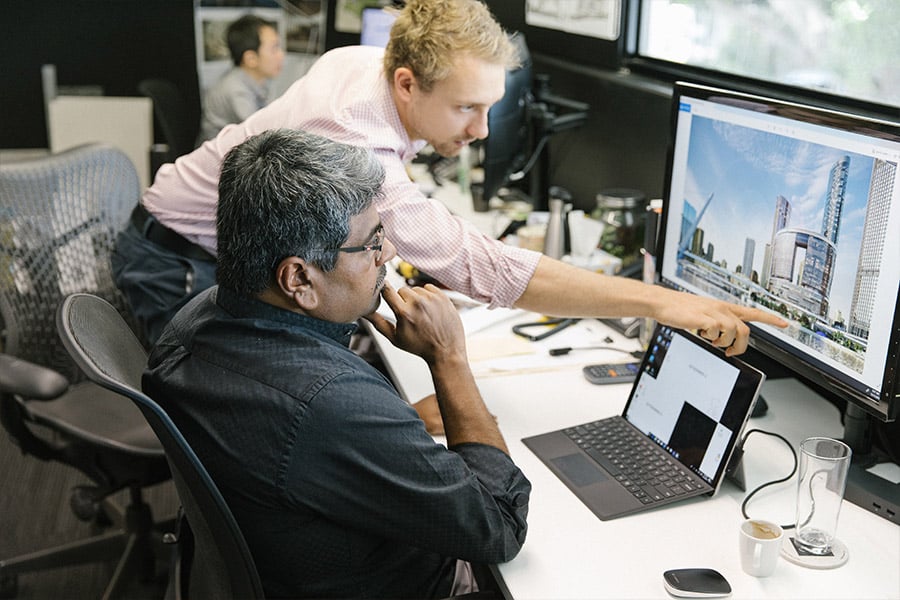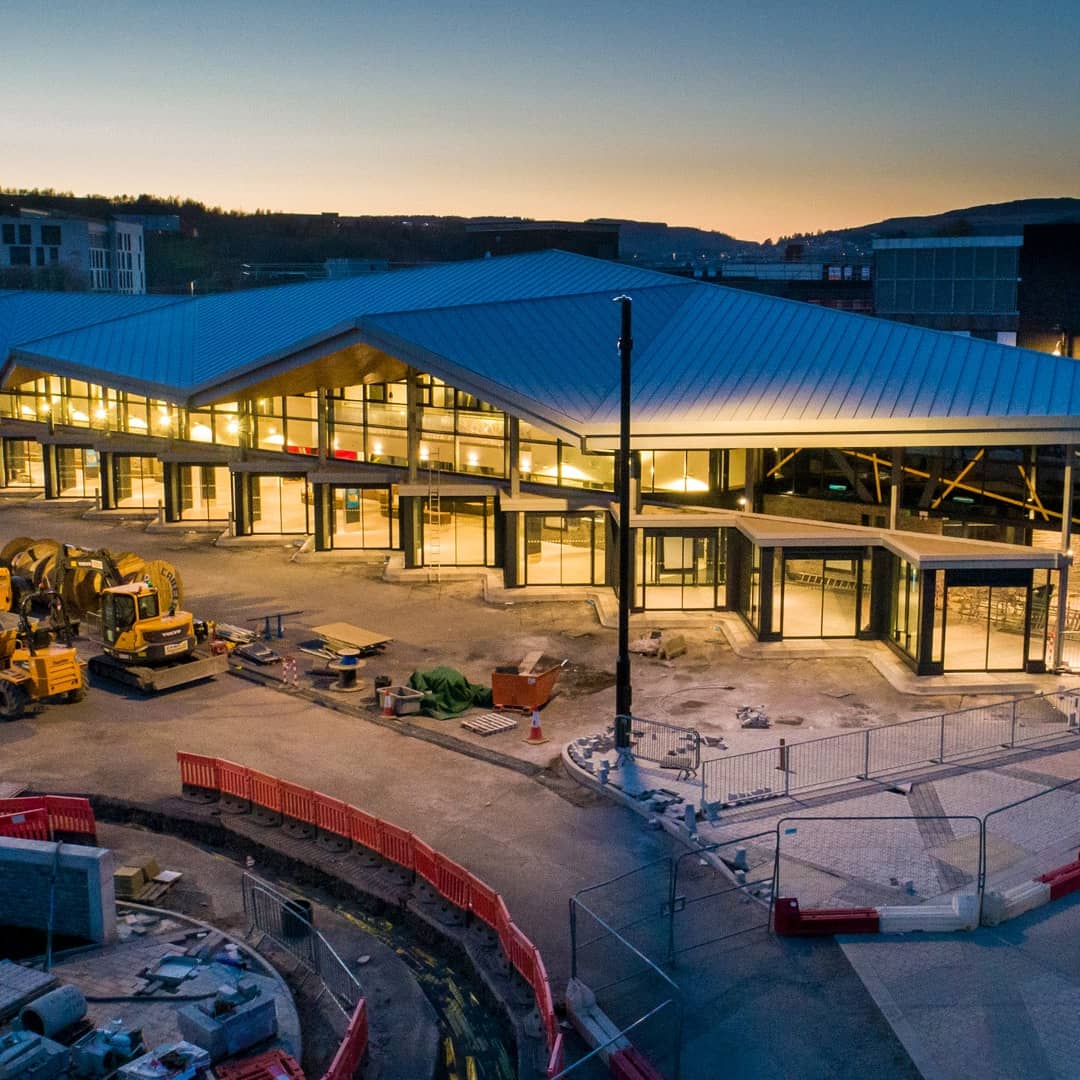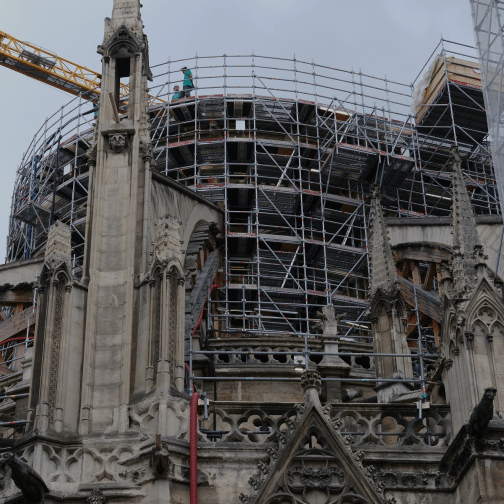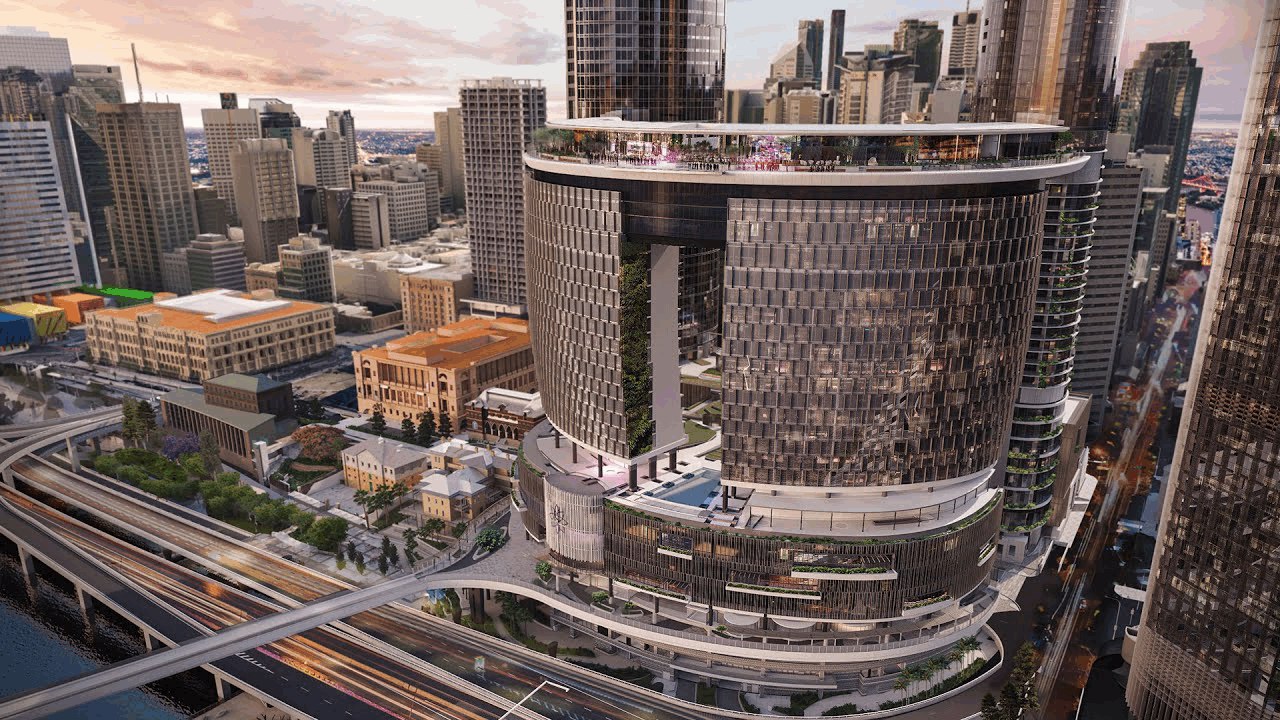
A transformational project
Cottee Parker is an architecture and design firm with offices across Australia that is currently the lead architect on the most-significant project in the company’s 30-year history.
Queen’s Wharf Brisbane is a nearly $4 billion mixed-use development set to open in 2024. It will include 2,000 apartments, 1,000 premium hotel rooms, 50 restaurants, a 1,000-person ballroom, 12 American football fields’ worth of public space, as well as a casino and retail space.
The development will be capped off with an elevated Sky Deck that will offer 360-degree views of the Brisbane River and city.
Queen’s Wharf Brisbane is projected to create more than 8,000 jobs once fully operational and add 1.4 million additional tourists to the city annually. This is estimated to result in a $1.7 billion annual increase in Queensland tourism spending. The developers project that, overall, Queen’s Wharf Brisbane will provide a $4 billion boost to Gross State Product.
“Queen’s Wharf is one of the largest projects in Australia,” said Naveen Dath, a Cottee Parker director and 25-year veteran architect. “The ultimate idea and the vision for Queen’s Wharf is about making it into a globally significant destination, one that would put Brisbane on the world map.”
“It is a truly transformational project,” Dath added. “Not just for Brisbane, but for Cottee Parker. It’s transforming the way we do things.”
Keeping track of paper
Queen’s Wharf Brisbane’s transformational influence on Cottee Parker started not long after it was named lead architect on the project.
“I remember when we were doing the initial schematic design stage in 2015,” Dath said. “There used to be reams and reams of paper hiding underneath people’s desks, with all kinds of mock-ups and red lines and pen. We probably had to cut down a few thousand trees to generate all that paper.”
Cottee Parker’s paper-based workflow quickly became a challenge with such a complex project, the biggest in the firm’s history and one that required it to consistently hit deadlines on a tight timeline. “One of the biggest challenges was the sheer number of documents that I had to check,” said Charles Simons, a documentation manager at Cottee Parker.
"The ability to be able to collaborate across individuals, across teams, across offices, I think is a fantastic benefit that we get out of Revu.”
Naveen Dath
Director
Cottee Parker
“We normally go through a process of printing out every single sheet that’s going to be issued to the client, putting initials of every project lead that needs to review it,” said Steph Cook, a Cottee Parker architect. “And then it gets passed around the office from one to another, and everybody tries to use a different colour pen so you can identify who’s actually done what.”
This manual circulate-and-review process was time consuming. Documents would sit on one architect’s desk for a day, with as many as 10 project leads needed to review a set of documents. “That’s 10 days almost that you can spend in a markup process,” Cook said.
What’s more, conducting such document quality assurance (QA) by hand on paper came with issues around legibility and accountability. QA is the process of preventing errors in design documents before they are delivered to the client, and with a smattering of paper documents floating around Cottee Parker’s offices and the Queen’s Wharf job site—and the time needed to transport the documents between the different locations—it often became difficult coordinating the process in a manner that seemed efficient and without a high probability for error.
“Documents would get lost with just the amount of paper that is around,” said Erina Tibaldi, a Cottee Parker documentation team leader. The firm estimates that Queen’s Wharf will ultimately require nearly five times the number of documents than a normal single office tower. “You end up with piles and piles of paper on your desk. It’s a bit hard to manage.”
“If you wanted to go back and check a markup that had been done before,” Tibaldi added, “it was a bit hard to find a particular sheet that had that hand markup on it to prove that you’d been told to do that particular markup.”
What’s the risk of possibly having an error in a document? “There’d be cost delays and overruns,” Tibaldi said. “If it’s not properly coordinated, it blows out time and money.”
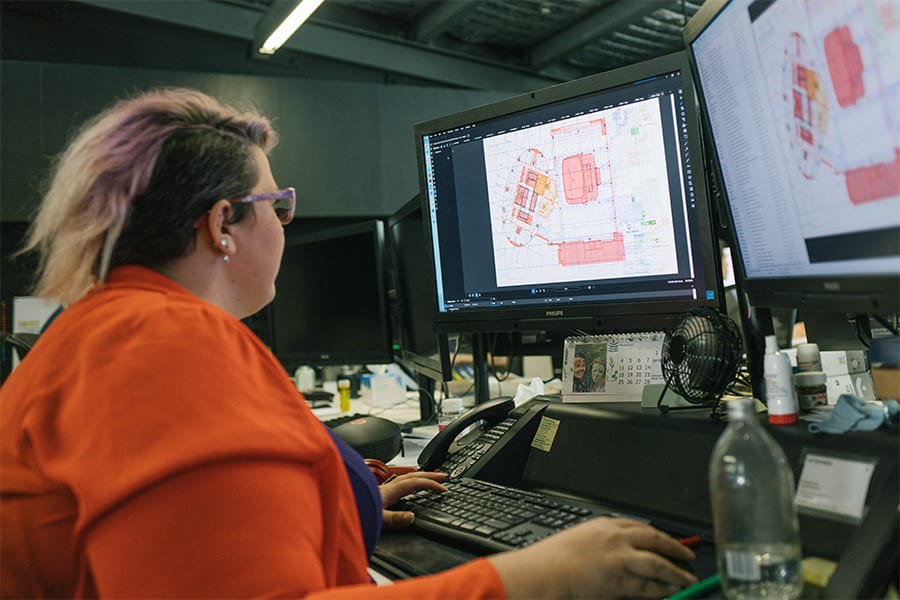
Going digital
A few Cottee Parker architects working on smaller projects introduced the Queen’s Wharf team to Bluebeam Revu. “We thought that we might be able to develop a system [with Revu] that made it easier for us to get through that [document review] process,” Simons said, “because that process took a fair bit of time.”
Simons said Bluebeam was “relatively easy to pick up.” Still, Cottee Parker conducted a formal roll out.
The challenge in the roll out, however, came with trying to convince the less tech-savvy team members to get on board. “Our approach was to mimic the actual real-world workflow that we already had in place,” said Quinton Cooper, a development and training manager at Cottee Parker. “The paper-based workflow that people were used to—we were able to mimic that really nicely in Bluebeam Revu.”
The results were immediate—so much that Cottee Parker started implementing Revu company wide. “We got it working on a major project like Queen’s Wharf and it rolled out fairly succinctly from there,” Cooper said.
Cottee Parker’s Queen’s Wharf team found quick use of Bluebeam Revu’s overlay and tool pre-set tools. “There’s general notes that we use a lot of the time where it’s no point retyping it and we can have templates,” Cook said. “But it’s also the ability to measure and calibrate drawings within Revu that is really useful.”
The Cottee Parker Queen’s Wharf team also took to using Bluebeam’s Studio Projects for document management and Studio Sessions for document collaboration. This helped the team cut down on the amount of time it was previously spending circulating paper documents. With Sessions, team members in different locations were now able to markup and comment on documents in real-time without having to transport them to different offices or within different areas of the Queen’s Wharf job site.
“The amount of time that it took was much, much less,” Cook said, “but it’s also we didn’t have people running around trying to find who wrote what comments. We’re actually connecting the people in the office that needed to be connected when there were discrepancies or items, and there was further coordination because you knew who wrote what. It wasn’t just a piece of paper that had a handwritten note from two weeks ago.”
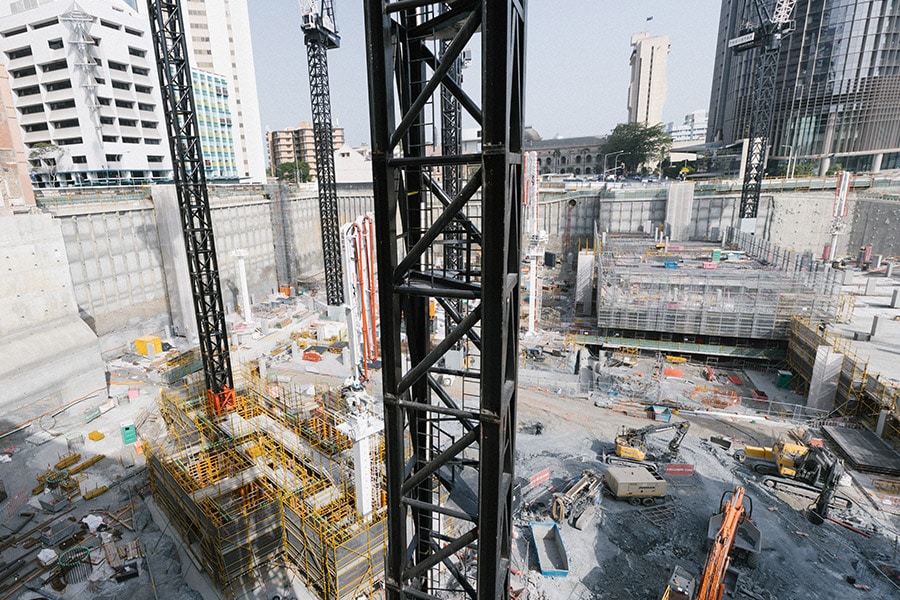
Seeing major results
Before Revu, Simons said document markups were taking the team a week or longer. After, that time was cut roughly in half.
“People can start working on my markups while I’m still working on them and adding them in there,” Simons said of Bluebeam’s Studio Sessions. “They don’t have to wait three or four days while I go through it all and give it to them and then they start. They can start immediately, which is a big benefit.”
Not having to print out so many documents has resulted in a huge cost savings for Cottee Parker—although how much, exactly, is hard to say.
“I think it’s about 30 cents per page at 1,000 pages just for workflow documents,” Cooper said. “That’s for one user, and we’ve got 50 users on the project. There’s a very large potential savings there.”
For Dath, Bluebeam Revu has not only helped his team cut down on the time it spends on certain aspects of the Queen’s Wharf design process, but it also helps diminish the overall risk to Cottee Parker taking on such a big, transformational project. The speed, accountability and efficiency provided by Revu, Studio Projects and Sessions has helped the team feel more confident about managing the complexities of the project.
“From what I’ve seen, the ability to collaborate across individuals, across teams, across offices is a fantastic benefit that we get out of Revu,” Dath said.
With about four years to go before Queen’s Wharf Brisbane’s opening, and with his team’s work optimised thanks to Revu, Dath said he and the team are more focused and motivated to finish the project and see it come to life. They know the impact it will have not just for Cottee Parker but for Brisbane.
“Just the thought of sitting up on the [Queen’s Wharf] Sky Deck and waiting for the sun to set behind the mountains,” Dath said. “That’s what’s driving me at the moment—and that’s what drives our team.”
